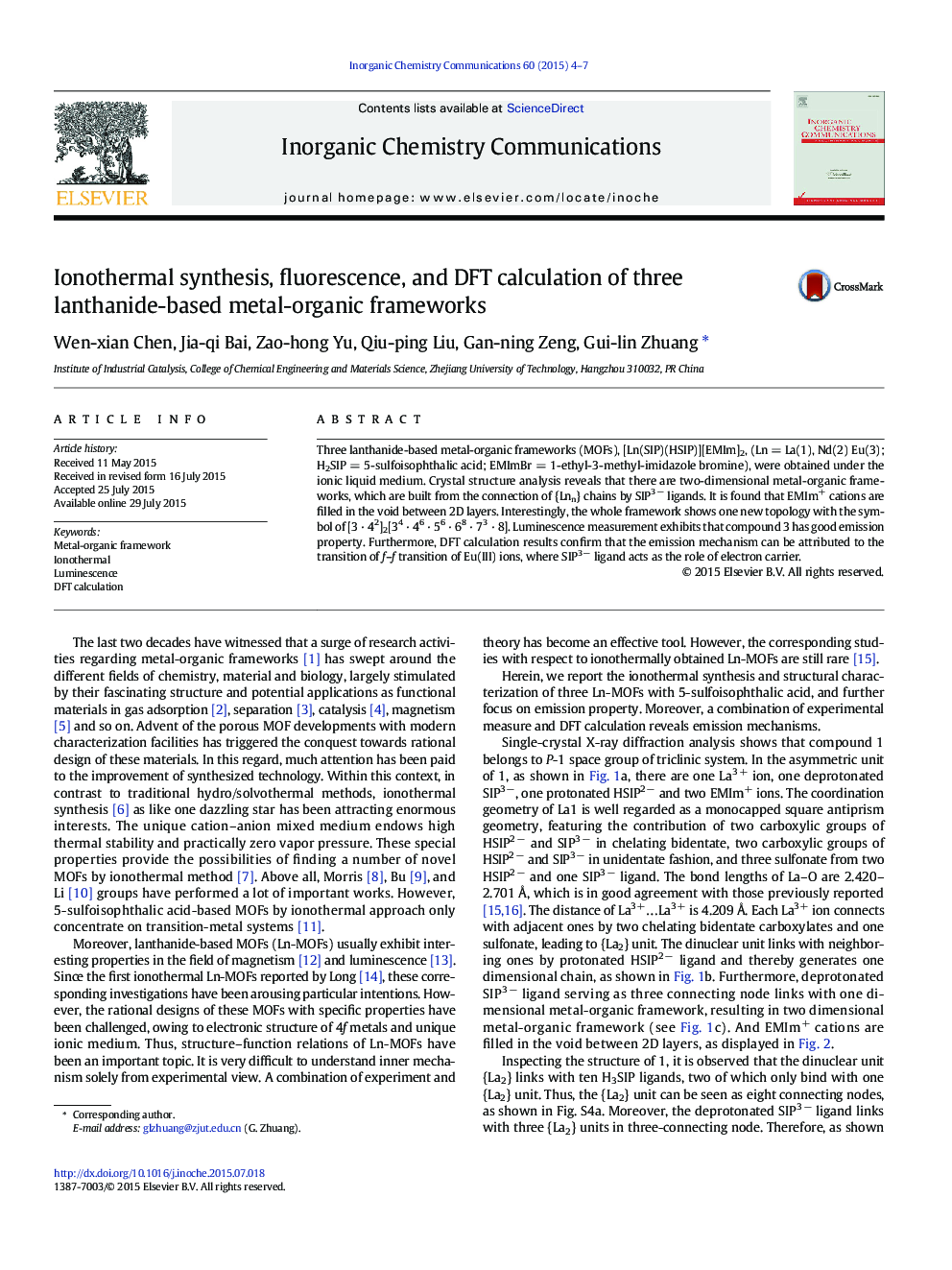| Article ID | Journal | Published Year | Pages | File Type |
|---|---|---|---|---|
| 1303332 | Inorganic Chemistry Communications | 2015 | 4 Pages |
•Three new lanthanide-based MOFs were obtained by ionothermal method.•Luminescence analysis shows that 3 have good fluorescence properties.•DFT calculation reveals the emission mechanism of f–f transitions in 3.
Three lanthanide-based metal-organic frameworks (MOFs), [Ln(SIP)(HSIP)][EMIm]2, (Ln = La(1), Nd(2) Eu(3); H2SIP = 5-sulfoisophthalic acid; EMImBr = 1-ethyl-3-methyl-imidazole bromine), were obtained under the ionic liquid medium. Crystal structure analysis reveals that there are two-dimensional metal-organic frameworks, which are built from the connection of {Lnn} chains by SIP3 − ligands. It is found that EMIm+ cations are filled in the void between 2D layers. Interestingly, the whole framework shows one new topology with the symbol of [3 · 42]2[34 · 46 · 56 · 68 · 73 · 8]. Luminescence measurement exhibits that compound 3 has good emission property. Furthermore, DFT calculation results confirm that the emission mechanism can be attributed to the transition of f–f transition of Eu(III) ions, where SIP3 − ligand acts as the role of electron carrier.
Graphical abstractThree ionothermally obtained lanthanide-based MOFs exhibit new two-dimensional frameworks and reveal the emission mechanism by a combination of experiment and DFT calculation.Figure optionsDownload full-size imageDownload as PowerPoint slide
